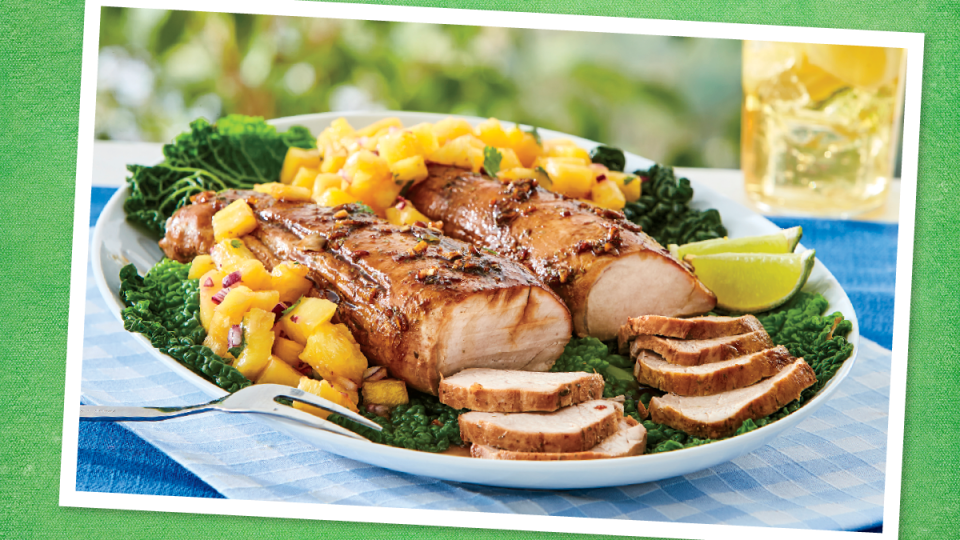On a frigid day in the middle of January, at the Grand Army Plaza Greenmarket in Brooklyn, Ray Bradley, a farmer from New Paltz, N.Y., was selling local heirloom tomatoes. Tucked next to the muddy celeriac, potatoes and onions, they stood out like a Hawaiian shirt in the snow, a pop of orangy red amid the beige and brown. Except these tomatoes were frozen solid.
“I freeze them in the summer, then bring them out on days like today, because they don’t thaw,” Mr. Bradley said. “People can make them into a sauce or whatever when there’s not a lot of other vegetables going on.”
We’ve reached the cold heart of winter here in the Northeast, the toughest time for vegetables and the cooks who love them. By January, the autumnal thrill we felt for the first teensy heads of brussels sprouts and colorful cauliflowers has waned; the novelty of turnips and cabbages stirs less enthusiasm as the weeks trudge by.
For farmers’ market shoppers, winter’s vegetable arc is the inverse of spring’s, as choices diminish from January to March and farmers run through what they’ve stored. Even in seasonless supermarkets, vegetables that have traveled halfway across the globe are generally worse for wear.
But winter’s adversity can be a gift, both for vegetables and for cooks. The quiet calm of the season can give cooks an opportunity to lavish time and care on the vegetables that remain, taking them to even greater heights. And for many winter vegetables, what they lack in variety, they make up for in quality, turning sweeter as the temperatures drop.
Winter’s nadir is exactly when you should seek out root vegetables like parsnips and Jerusalem artichokes, Mr. Bradley said, adding that leaving them in the ground helps them grow sweeter.
“Jerusalem artichokes need to freeze,” he said. “Otherwise, they taste like sawdust.”
Vegetables in the brassica family — cabbages, brussels sprouts, kale, cabbages and the like — can also benefit when the mercury dips.
The sugars in some vegetables act like a natural antifreeze, helping plants stay alive in icy climates, said Lane Selman, a professor of horticulture at Oregon State University and director of the Culinary Breeding Network. Brassica vegetables, in particular, she says, accumulate sugars, which helps them better withstand the cold while also affecting their flavor.
A winter field of brussels sprouts may look barren, the stalks covered in withering yellow leaves. But pull them back and you’ll find some of the most flavorful sprouts just waiting to be roasted until their outsides caramelize, or shaved, raw, into a crunchy slaw.
Or you can do both, tossing shaved and roasted sprouts with a lemony, garlicky Caesar-like dressing and garnishing it with crisp croutons.
Although not a member of the brassica family, radicchio also mellows in the winter, its strident flavor softening in the cold without losing its innately bitter personality.

All these characteristics — the sharpness of radicchio, the mustardy bite of brassicas, the earthiness of drab roots — can make winter vegetables a tough sell, especially when compared with amenable, brightly colored summer ones, Ms. Selman said.
To encourage people to seek out local winter vegetables, she started a project called Eat Winter Vegetables, which gives tips on unlocking their hidden treasures.
Take that radicchio, for example: Soaking it in ice water for about 30 minutes, or even as few as 10, leaches out some of the bitter compounds so it’s milder. Then, you can turn it into a bracing salad, perhaps drizzled with green goddess dressing and topped with roasted butternut squash as a gentle contrast.
As for those winter squashes, it’s last call, so grab them before they’re gone. Typically harvested in the fall, they’re well suited for storage, thanks to their low moisture content and thick skins. By February, though, they will start to disappear from farmers’ markets as stores dwindle and what’s left starts to rot.
Whether roasted or shaved raw, brussels sprouts and their plush, soft flesh can be a perfect complement to the sharpness of other winter vegetables.
Another strategy, Ms. Selman suggests, is pairing robustly flavored winter produce with other assertive ingredients like vinegar, chiles, garlic and ginger. You can combine all of these into a pungent dressing for roasted carrots or parsnips, inspired by smashed cucumber salads. That same dressing would also be delightful on raw cabbage, or steamed cauliflower or broccoli.
You might see fennel turning up now, because, even though it’s not strictly a winter vegetable, it holds up well if harvested before the first frost. Its licorice intensity plays nicely with tangy, juicy citrus fruit.
“Fennel and oranges are a natural combination,” Ms. Selman said. “It’s the standard winter salad in Sicily.”
Roasting fennel concentrates its flavor, and adding some hearty farro, along with the orange, olives, dates and feta, turns a side salad into a light meal.
As for Mr. Bradley’s frozen tomatoes, they’ll sell out fast, and after that, he said, “it’s down to the roots, the parsnips and Jerusalem artichokes.”
Don’t count them out. They’re the best of the year.
Recipes: Smashed Roasted Carrots | Brussels Sprouts Caesar Salad | Roasted Butternut Squash Salad With Green Goddess Dressing | Roasted Fennel and Farro Salad
from "recipes" - Google News https://ift.tt/jp4cWth
via IFTTT

No comments:
Post a Comment